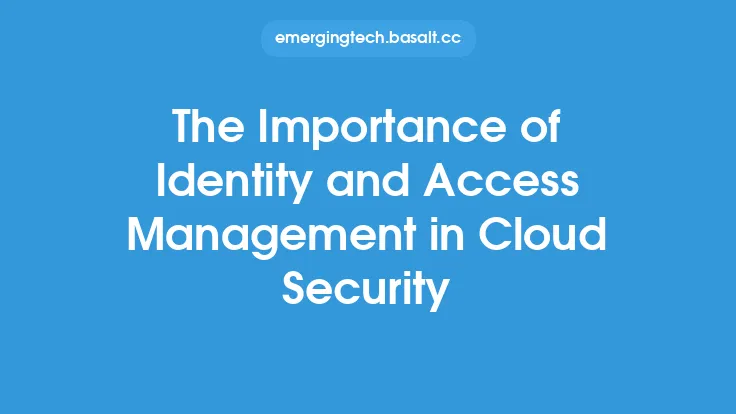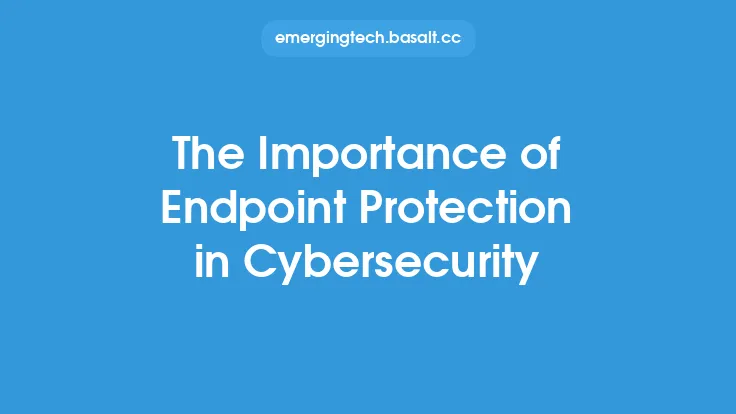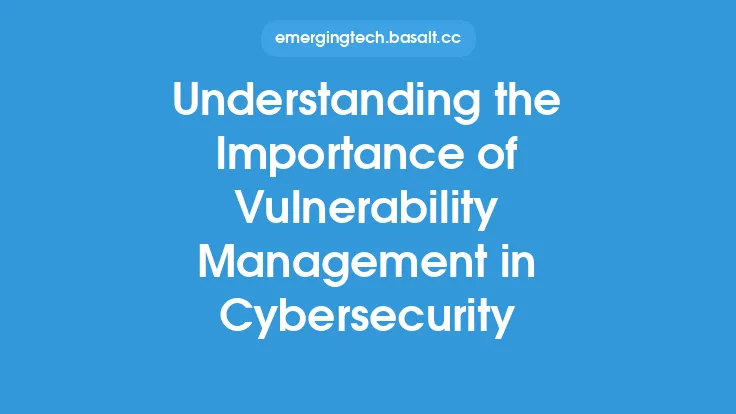In today's digital age, passwords are the primary means of authentication for accessing online accounts, devices, and systems. With the increasing number of password-protected accounts, managing passwords effectively has become a crucial aspect of personal and professional cybersecurity. Password management involves the process of creating, storing, and using strong, unique passwords for each account, while also ensuring that they are easily retrievable and up-to-date. Effective password management is essential for preventing unauthorized access to sensitive information, protecting against cyber threats, and maintaining the confidentiality, integrity, and availability of data.
Introduction to Password Management
Password management is a critical component of cybersecurity that involves a set of best practices and techniques for creating, storing, and using passwords. A well-managed password system helps to prevent password-related security breaches, reduces the risk of identity theft, and protects against various types of cyber attacks. Password management involves several key aspects, including password creation, password storage, password rotation, and password recovery. By implementing a robust password management system, individuals and organizations can significantly reduce the risk of cyber threats and protect their sensitive information.
Password Creation and Complexity
Creating strong, unique passwords is the foundation of effective password management. A strong password should be at least 12 characters long, contain a mix of uppercase and lowercase letters, numbers, and special characters, and be easy to remember. Passwords should also be unique for each account, and avoid using easily guessable information such as names, birthdays, or common words. Password complexity is critical in preventing brute-force attacks, where attackers use automated tools to guess passwords. By using a combination of characters, numbers, and special characters, individuals can create passwords that are resistant to brute-force attacks and other types of cyber threats.
Password Storage and Management
Storing passwords securely is another critical aspect of password management. Passwords should never be stored in plain text or written down on sticky notes. Instead, individuals and organizations should use password managers, which are specialized software applications designed to securely store and manage passwords. Password managers use encryption and other security measures to protect passwords, and often include features such as password generation, auto-fill, and password sharing. By using a password manager, individuals can easily generate and store unique, complex passwords for each account, while also reducing the risk of password-related security breaches.
Password Rotation and Expiration
Password rotation and expiration are essential components of password management. Password rotation involves changing passwords regularly, typically every 60 to 90 days, to reduce the risk of password compromise. Password expiration involves setting a specific expiration date for passwords, after which they must be changed. By implementing password rotation and expiration policies, individuals and organizations can reduce the risk of password-related security breaches and ensure that passwords are up-to-date and secure.
Multi-Factor Authentication
Multi-factor authentication (MFA) is an additional layer of security that can be used in conjunction with password management. MFA involves requiring users to provide two or more forms of verification, such as a password, fingerprint, or smart card, to access an account or system. By using MFA, individuals and organizations can significantly reduce the risk of password-related security breaches and protect against various types of cyber attacks. MFA can be implemented using a variety of methods, including one-time passwords, biometric authentication, and smart cards.
Password Management Best Practices
Implementing password management best practices is essential for ensuring the security and integrity of passwords. Some best practices include using strong, unique passwords for each account, storing passwords securely using a password manager, rotating passwords regularly, and implementing MFA. Individuals and organizations should also avoid using easily guessable information, such as names or birthdays, and avoid sharing passwords with others. By following these best practices, individuals and organizations can significantly reduce the risk of password-related security breaches and protect their sensitive information.
Technical Aspects of Password Management
From a technical perspective, password management involves several key aspects, including password hashing, salting, and encryption. Password hashing involves converting passwords into a fixed-length string of characters, using a one-way algorithm. Salting involves adding a random value to passwords before hashing, to prevent rainbow table attacks. Encryption involves using algorithms to protect passwords, such as AES or RSA. By using these technical measures, individuals and organizations can protect passwords from unauthorized access and ensure the confidentiality, integrity, and availability of data.
Conclusion
In conclusion, password management is a critical component of personal and professional cybersecurity. By creating strong, unique passwords, storing them securely, rotating them regularly, and implementing MFA, individuals and organizations can significantly reduce the risk of password-related security breaches and protect their sensitive information. By following password management best practices and implementing technical measures such as password hashing, salting, and encryption, individuals and organizations can ensure the security and integrity of passwords and maintain the confidentiality, integrity, and availability of data. Effective password management is essential for preventing unauthorized access to sensitive information, protecting against cyber threats, and maintaining the security and integrity of online accounts, devices, and systems.





